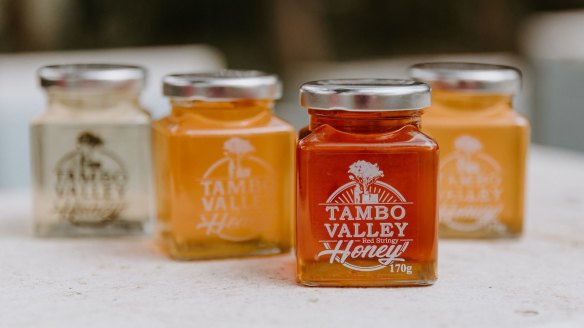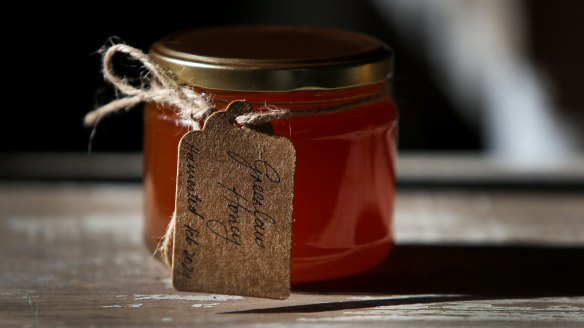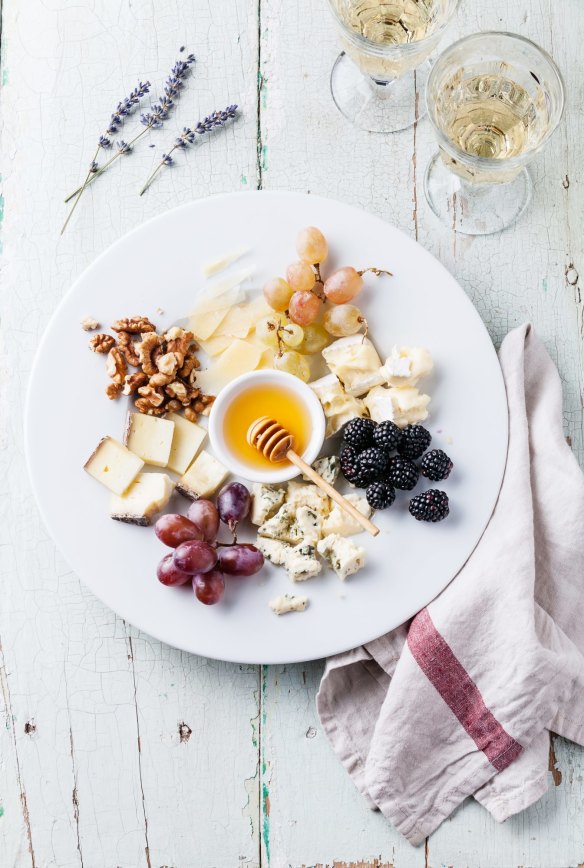Yes, 'honey sommelier' is now a delicious new job

Jessica Locarnini is a sommelier. Her palate can distinguish nuanced flavours and terroir; she can detect faults and adulteration. But unlike a restaurant sommelier who recommends wine to guests, Locarnini works in the field of honey.
The Melbourne-based marketing professional has trained with – and received official certification from – the American Honey Tasting Society to detect hundreds of different aromas in the sticky, viscous liquid and even distinguish what sort of flowers bees have foraged on.
She is now working with beekeepers to develop language around Australian honey collected in native forests, and advising chefs on the right honey for the right dish.

To explain her evaluation process, Locarnini holds a wine glass dolloped with honey up to the light. She turns it, watching the light catch the fine crystals.
"Crystals are good," she says. "They indicate that the honey is natural and has not been pasteurised, which destroys nutrition."
Locarnini plunges her nose into the glass and takes a long whiff, pausing to work out the aromas. Using a spoon, she then takes a small sample of the honey and rolls it around in her mouth.

The sommelier ponders for a moment then writes down a few descriptive words which far exceed "sweet" and "floral". Locarnini uses terms such as caramel, yeasty, lactic, camphorous, spicy and medicinal.
"You have to remain neutral and not bring in prejudice when evaluating honey," she says. "But the nasal bulb is connected to the part of the brain related to memories and emotion. When you smell honey it inevitably evokes memory."
Locarnini was trained by Italian experts Carla Marina Marchese and Gian Luigi Marcazzan, people intent on creating a global army of honey sommeliers. "Italians have such a strong honey culture," she says.
Her Italian mentors have contributed to scientific papers outlining how tasters can be used to detect adulteration of honey (meaning the honey has been mixed with something other than nectar from bees, such as rice syrup), a growing problem in world honey production.
The sommelier course also opened Locarnini's eyes to the beauty and unique quality of the honey produced in Australia from native forests.
"In Europe they produce something called 'Eucalyptus Honey'," she says, using air quotes. "One eucalyptus honey! In Australia we produce hundreds of unique, beautiful and delicious eucalyptus honeys around the country."
Locarnini points to black box honey as an example, collected from trees in north-west Victoria. "At first, it tastes like unripe bananas – then it tastes like banana bread."
Lately, she has been working with Australian beekeepers to develop words and language to describe individual honeys. "In a world of processed food products, Australian monofloral [single variety] honeys are so wonderfully individual," she says.
"They can change with each patch of forest, evoking the French sense of 'terroir'. I want to help beekeepers describe their honeys using words that evoke their personal experience – their memory."
She says Australian beekeepers sometimes fail to celebrate the unique individual character of their honeys and this can be reflected in a lack of sales.
Locarnini, who calls herself The Honey Merchant and keeps a backyard hobby hive, also offers advice to cheese-lovers and chefs.
She suggests pairing honey with cheese of equal intensity and flavour, such as an orange blossom honey with goat's curd. Contrasting flavours can also work – Australian blue cheese with a light clover honey, for example.
"And you can increase the textural experience of a good crumbly cheddar with honey that has crystalised."
Ultimately, Locarnini views her role as educating Australians to experiment with all the different types of domestic honey.
"Good honey needs healthy bees, healthy trees, healthy crops and flowers," she says. "When we taste honey, we're tasting our bush and forests."
Jessica Locarnini's tasting notes for Australian honeys to try
Alpine Ash
Visual state and texture: Very dark, mahogany. Runny and fairly viscous. Very smooth, no crystals, and leaves an astringent mouthfeel.
Odour: At first very chemical, almost like rubber car tyres. With the second sniff, you pick up more smoky, coffee odours with black espresso notes.
Flavour: Savoury with smoky bitterness. First taste gives green, vegetal notes almost like biting into the stalk of a raw aloe plant. The flavour develops and transforms from raw to ripe in the same mouthful. By the end, the green flavour has become more like caramelised dry fruit.
Banksia
Visual state and texture: Dark amber with a smooth, viscous consistency. No crystals are present, mouthfeel is astringent.
Odour: There's an initial animal smell of wet dog. This evolves to a rich caramel, brown sugar aroma.
Flavour: Savoury with strong umami throughout. Initially the taste is medicinal, or like unripe bananas, but evolves to a malty, cooked brown sugar.
Ironbark
Visual state and texture: Transparent sunflower yellow and the consistency of melted glass. The lingering mouthfeel is soapy.
Odour: Very delicate with lactic notes of sour milk and dry hay. A red berry yoghurt aroma is also present.
Flavour: Sweet and buttery flavour, almost like condensed milk. A quick, sharp floral hit is followed by smooth butterscotch.
Where to buy
"You can meet Australian beekeepers at farmers' markets, or find their honey in local food stores or online," says Locarnini. "Beechworth Honey has a great selection of single origin honeys available through their website, and close friends of mine provide them with tea tree, mallee, banksia, redgum, bluegum and other variants."
Locarnini says some of her favourite Victorian beekeepers provide mixed floral, seasonal honey at local markets and stores. These include Come Fly with Me Beekeeping, Honey Fingers, The Practical Beekeeper and Buukaar Waaruung Boutique Apiary in Western Victoria.
In NSW, the sommelier recommends Mount Henry Honey. The family-owned and run apiary sells beautiful redgum, yellowbox and greygum honey from forests at the foot of the Blue Mountains.
Restaurant reviews, news and the hottest openings served to your inbox.
Sign up- More:
- Restaurant news
